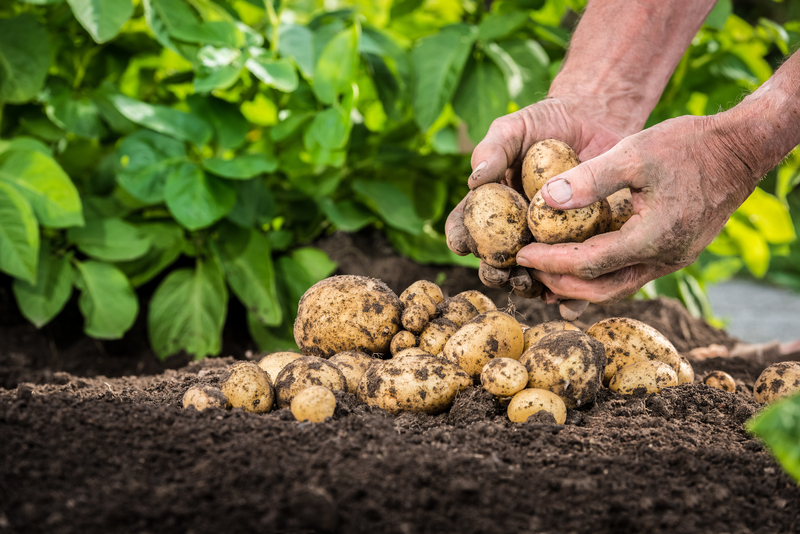You might want to plant your own potatoes, but think you don't have the space to do so. You'll actually be surprised at the number of options you have when it comes to growing them. Once you know where you want them, you can watch your new potato seeds grow into a bountiful harvest.
START WITH SEED POTATOES:
And you’ll want “official” seed potatoes– not sprouted, shriveled grocery store potatoes. Using proper seed potatoes ensures you won’t be introducing any diseases into your garden. There are a variety of online seed potato suppliers (Google ’em) or check your local nursery or farmer’s market.
Yukon Golds are my #1 absolute favorites, but I usually grow several different kinds each year, including Kennebec, Red Pontiac, German Butterball, All Blue, and/or some various purple ones.
WHEN/WHERE TO PLANT POTATOES:
Chitting (aka pre-sprouting) your seed potatoes can give your plants a head start for healthy growing. I also cut up the larger potatoes to make them stretch a bit further– however if you do this, make sure to have at LEAST two eyes per piece.
You can plant your potatoes a few weeks before your last frost date in the spring.
Since potatoes are a root crop, plant in loose, compost-rich soil with good drainage.
Plant your potatoes in full sun.
Plant them where you have not recently grown either tomatoes or potatoes (crop rotation is a MUST!).
When planting, space them at least 1 foot apart, and have your rows about 3 feet apart.
HOW TO PROPERLY PLANT POTATOES:
The classic way is the ‘trench and hill method‘: Start by making rows of shallow trenches, with the mounds of soil from those trenches in between the rows. Place the potatoes (cut side down and/or sprout side up) in these trenches and cover with loose soil. As your potato plants grow, hill up the excess soil around the plants, so that you not only get MORE potatoes, but you are also protecting your potatoes from the sun. Keep mounding soil up around your potato plants until there is at least 1 foot of soil.
Alternative Methods of Growing Potatoes:
Potato towers: I’ve seen pallet towers, fancy wooden towers, and even recycled tires for potato towers. You basically add sides to the tower and more soil as the plants grow.
Potatoes in grow bags: You can grow potatoes in burlap bags or grow bags.
Potatoes in mulch: I like using mulch as you don’t have to dig the trenches as deeply.
Potatoes in containers: Trash cans, storage tubs, 5 gallon buckets, old bathtubs in the backyard.
POTATO GROWING MAINTENANCE:
Check to make sure the potatoes are properly covered with dirt or mulch and not exposed to sun.
Aphids can occasionally be a problem, however, the main culprit is the Colorado potato beetle. In the past I’ve paid my kids to pick potato bugs/eggs or my DIY organic pest control spray.
If you see black or moldy leaves, it’s possible you have potato blight. Remove and burn the damaged foliage and be sure to always use high-quality seed potatoes to attempt to avoid it in the first place.
HARVESTING POTATOES:
Some people use digging forks, but you can also just dig into the soil with your hands. Use caution as you dig to avoid damaging the roots of the plants, and be sure to leave some potatoes to mature for later.
If you are growing potatoes for storage, leave them in the ground for a few weeks after the leaves and stems turn brown and dry. Do NOT wash your potatoes if you are going to store them. Just brush them off.
For storage potatoes, harvest them on a dry day and allow them to cure them for a few days before storing in a dark, cool, and well-ventilated place. They can last for up to 6 months in proper conditions.
Do you grow potatoes on your property? What other tips do you have for planting, growing and harvesting them?
Article Source: The Prairie Homestead

Is it too late to get started?